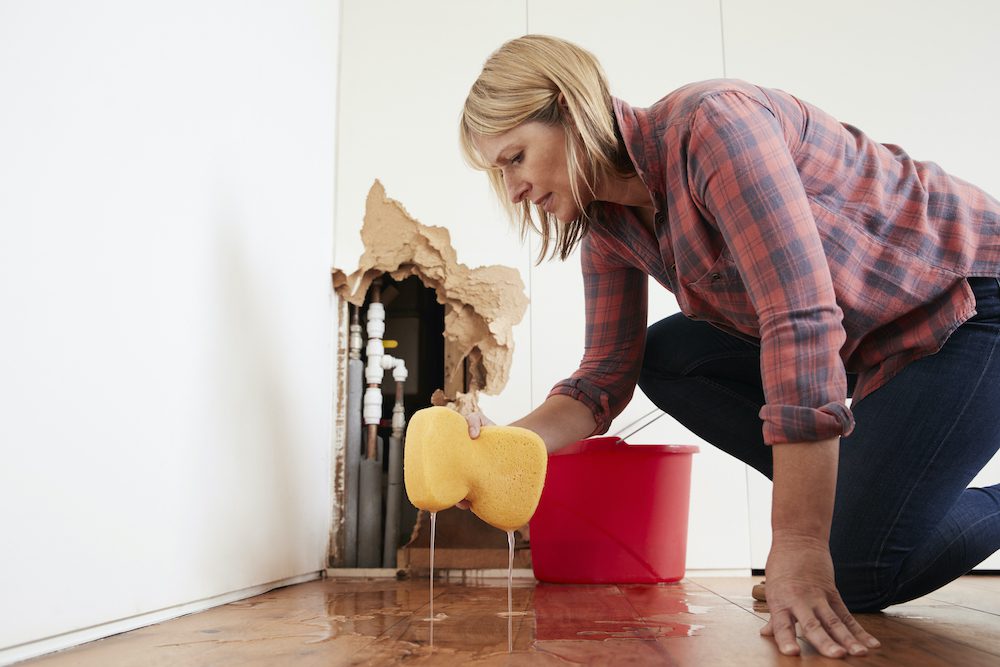The content listed below involving Locating water leaks is rather insightful. Don't bypass it.

Early discovery of dripping water lines can minimize a potential disaster. Aside from saving you money, it will certainly lessen the irritation and also aggravation. The moment you find a leak, calling your plumber for fixings is the best option. However, some small water leakages might not be visible. If you can not discover it with your nude eyes, right here are some hacks that assist.
1. Analyze the Water Meter
Inspecting it is a surefire way that helps you uncover leakages. If it moves, that indicates a fast-moving leakage. This means you may have a slow leak that could also be below ground.
2. Check Water Consumption
Assess your water costs and track your water consumption. As the one paying it, you ought to observe if there are any kind of discrepancies. If you identify sudden changes, regardless of your consumption being the same, it suggests that you have leaks in your plumbing system. Bear in mind, your water expense must fall under the exact same array monthly. An unexpected spike in your bill suggests a fast-moving leak.
At the same time, a stable increase on a monthly basis, despite the exact same routines, shows you have a slow-moving leak that's likewise slowly rising. Call a plumber to extensively examine your building, especially if you feel a warm location on your floor with piping below.
3. Do a Food Coloring Test
When it comes to water consumption, 30% comes from bathrooms. If the shade in some way infiltrates your bowl throughout that time without flushing, there's a leak in between the tank and bowl.
4. Asses Exterior Lines
Don't forget to inspect your outdoor water lines as well. Must water permeate out of the link, you have a loosened rubber gasket. One little leakage can lose loads of water and spike your water costs.
5. Examine the circumstance and check
Home owners need to make it a habit to check under the sink counters as well as even inside closets for any bad odor or mold and mildew growth. These two red flags suggest a leak so punctual attention is required. Doing regular inspections, even bi-annually, can save you from a significant issue.
If you understand your residence is currently old, maintain a careful eye on your heating units, pipes, pipelines and so on. Look for stainings as well as compromising as the majority of pipelines and devices have a life expectancy. They will likewise naturally degrade due to wear and tear. If you think dripping water lines in your plumbing system, do not await it to rise. Call an expert plumber right away so you don't end up with an awful mess in your home.
Early detection of leaking water lines can mitigate a prospective catastrophe. Some little water leakages might not be visible. Examining it is a surefire method that aids you find leakages. One little leak can squander heaps of water and also surge your water expense.
If you believe dripping water lines in your plumbing system, do not wait for it to escalate.
How to Know If Your Home Has a Hidden Leak
Water Meter Reveals Inexplicable Water Usage
If you’d like to test whether or not there’s a leak somewhere in your home, you can do this using your water meter. Here is how to conduct the test:
Don’t use any water in your home for at least 30 minutes; this also means not turning on faucets or water-using appliances.
Go outside, and check your water meter for activity.
If your water meter shows that there was activity, even though no one was using any water, this proves that there is a leak in your home.Visible Mold or Mildew Growth
Leaks behind walls create moist, dark environments that allow mold and mildew to grow and thrive. Eventually, you might see mold growth forming on the wall closest to a hidden leak.
If mold is growing in an area that receives a high amount of moisture, such as a bathroom, it may simply be an indication that better ventilation is needed. However, if you see mold growth on a wall or the ceiling in an area where you would not expect, you probably have a hidden leak.
Musty, Mildew Odor
Sometimes you might not be able to see the mold or mildew that is growing as a result of a leak. However, the smell can give the problem away just as easily. If you catch a whiff of something musty, there’s a good chance that old water is collecting somewhere in your home that you can’t see.
Stained/Warped Walls, Ceilings, or Floors
When your home soaks up water, a variety of red flags can become visible, including ceiling stains, bubbling drywall, warped walls, and sagging floors. While these issues can be caused by excess humidity, they can also be signs that a pipe or plumbing connection has started leaking behind your walls.
Inexplicably High Water Bill
After a while, you get a general sense for what your water bill should be. If you own a pool or sprinkler system, your bill will tend to be higher during summer. However, if you receive a water bill that seems especially high, and you can’t figure out what caused it, then you may have a hidden leak somewhere that’s increasing your bill.
https://www.plumbingjoint.com/blog/2019/july/how-to-know-if-your-home-has-a-hidden-leak/

As a passionate person who reads about Hacks to detect leaks, I imagined sharing that short article was worthwhile. Sharing is good. Helping people is fun. Thank-you for going through it.